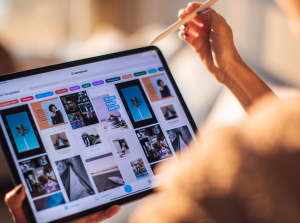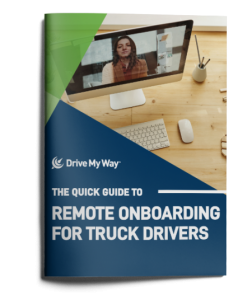
Whether digital process enhancements have been underway at your company for years or are completely new in your fleet, Coronavirus changed everything. Many tried and true processes for hiring, onboarding, and training are simply not feasible right now. With the possibility of continued social distancing looking likely, establishing a protocol for remote onboarding is well worth the time. Here are a few best practices that have proven successful in the trucking industry.
Prioritize People
Driver safety has to be a high priority for all fleets during this time. Drivers have questions about everything from orientation to sanitation. It’s important to address these concerns quickly and compassionately.
As you hire new drivers, it may be tempting to increase efficiency by removing human contact in the onboarding process and relying solely on technology. In this case, removing the personal touch is a counterproductive strategy.
With reduced face to face contact, reaching out to new employees becomes even more important. Each interaction becomes more meaningful because there are fewer touchpoints. Studies have demonstrated that most driver turnover happens within one year. With such limited time, it’s critical to start out on the right foot. What you do in response to the challenges of trucking during Coronavirus will leave a lasting impression. With that in mind, even with remote onboarding, make every effort to warmly welcome new drivers into your company.
Get Organized
Transitioning to remote onboarding for the foreseeable future may require a significant shift in workflow. As you prepare to refine the rapidly implemented processes of this spring, consider what you will need to move more permanently to remote onboarding.
Gather the requisite hiring documents and establish a secure system for sharing them with drivers. That might include driver contracts, tax documentation, and any other hiring forms you typically request.
Throughout the entire process, allocate more time than you would usually consider necessary. Both management and employees are likely going through several “first-times.” A buffer allows everyone involved to work through challenges without the pressure of a tight deadline.
Digitize Your Material

Review the training files you would normally give to new drivers. If a digital copy doesn’t already exist, make one and decide how you will share that information. Fleets with greater financial flexibility may consider working with a learning management system designed for onboarding truck drivers. For companies on a tight budget, start with free tools like online repositories that let you share files and folders. Drivers should be able to access much of their training material remotely.
There are some training components that work well in person but fall flat online. Avoid trying to use materials designed for in-person orientation in exactly the same format online. Instead, use this time to consider how that information is best presented in a virtual format. Often, that means shorter “in-person” sessions, and more opportunities for drivers to learn at their own pace.
Communicate Clearly
As you move forward with changes to your remote onboarding process, don’t forget that drivers are also in uncharted territory. Many drivers may not immediately be comfortable with using technology for onboarding. For some drivers, this may be the first time they are using many of the online job training tools.
Prior to the onboarding process, communicate with drivers about exactly what they can expect.
If you are using specific technologies, share the details early. When possible, give drivers time to explore programs like video calls on their own to prepare. Any guidance you can offer on accessing information will also help smooth the process.
Infuse Your Culture
 Driver orientation and onboarding is about more than information sharing from your company. It’s also when drivers meet their peers and supervisors. It’s hard to replace this kind of natural networking in remote onboarding. Video calls, social networks, and personal phone calls or emails all help bridge the gap.
Driver orientation and onboarding is about more than information sharing from your company. It’s also when drivers meet their peers and supervisors. It’s hard to replace this kind of natural networking in remote onboarding. Video calls, social networks, and personal phone calls or emails all help bridge the gap.
During orientation, consider arranging at least one video call for all new drivers. This is also the perfect opportunity to launch a mentoring program. Then, new drivers meet other members of the fleet and have at least one personal connection to regularly connect with as they start their new job.




